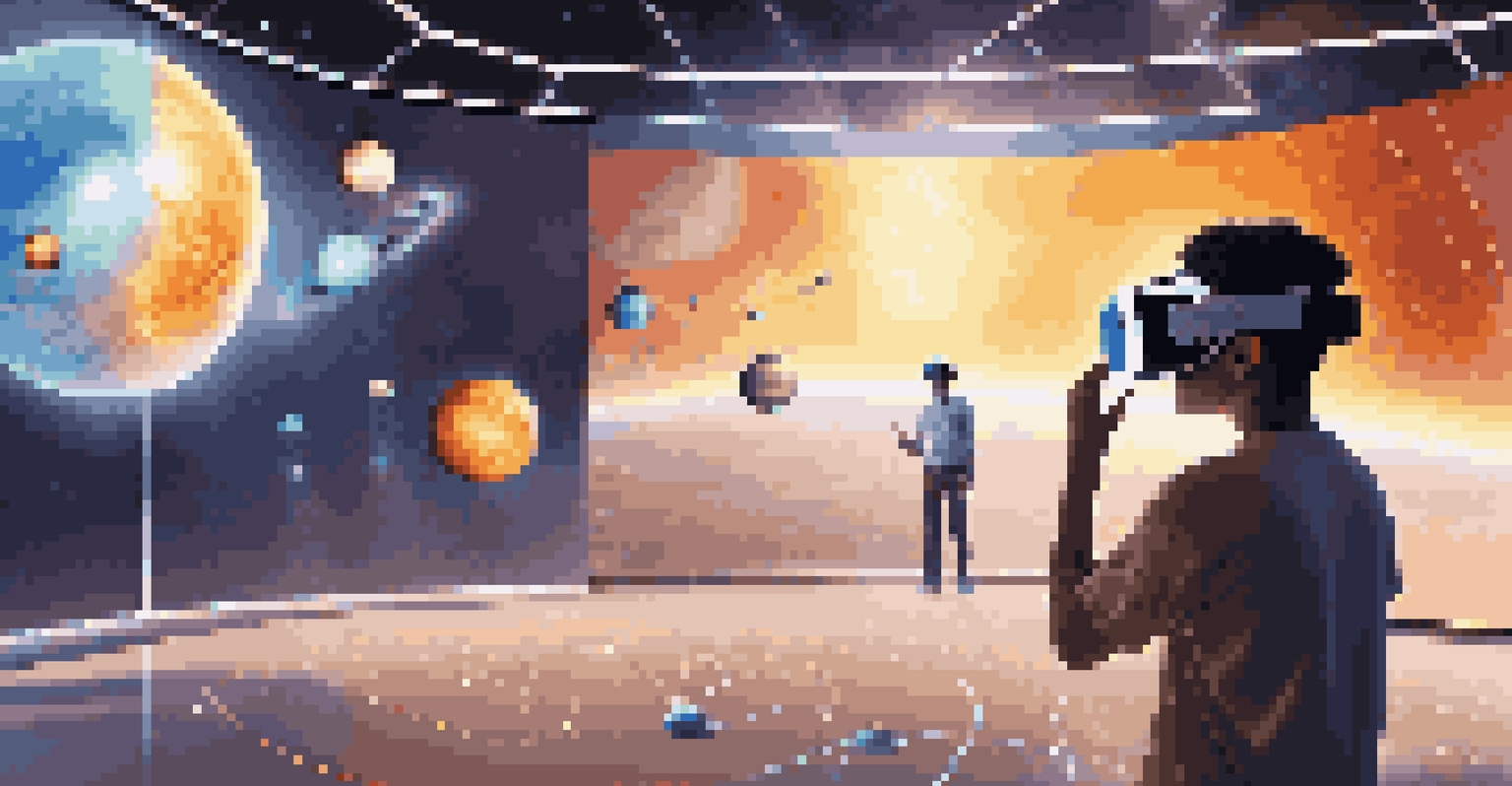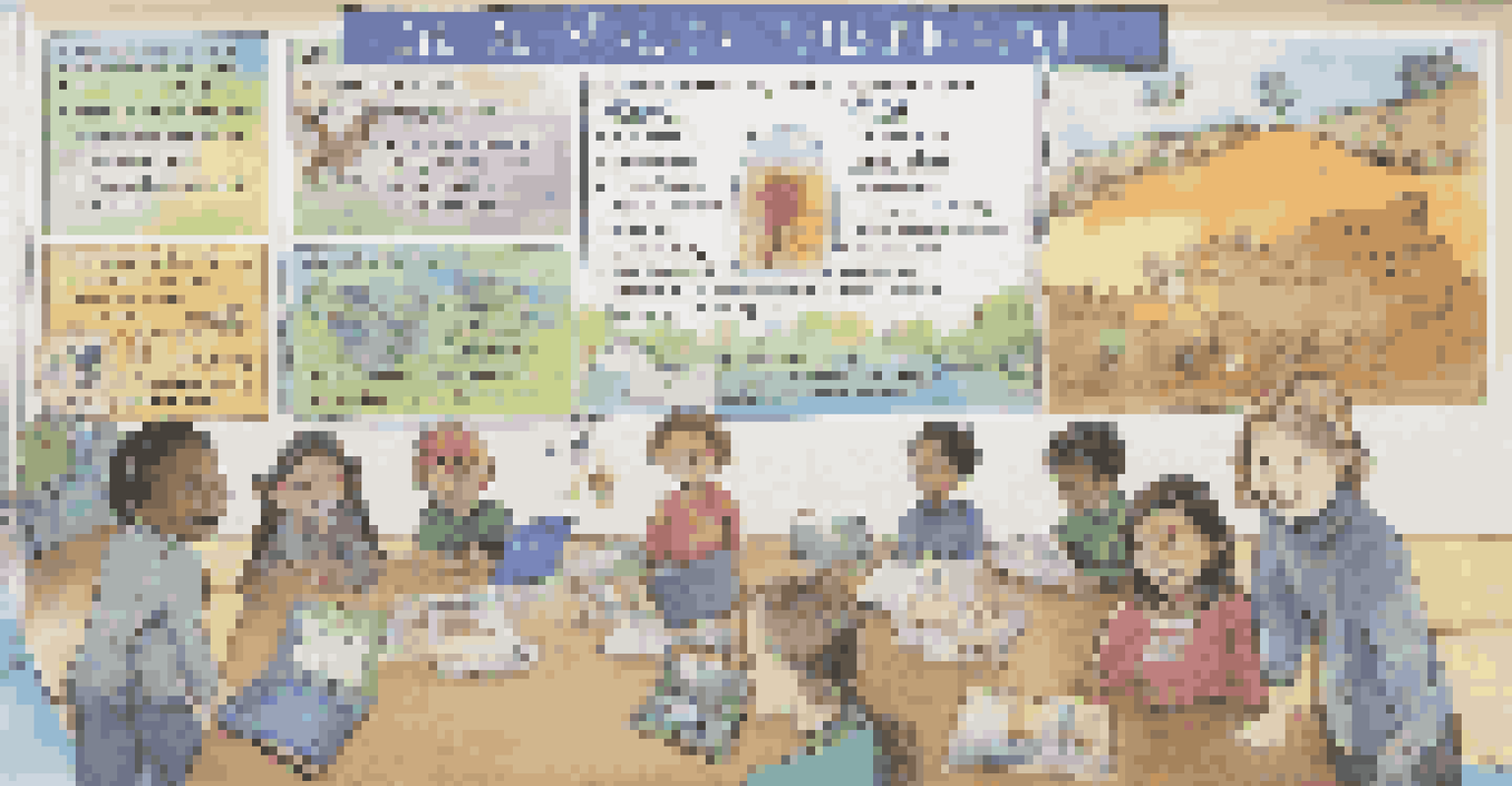Creating Engaging Digital Stories for STEM Education

Understanding Digital Storytelling in STEM
Digital storytelling combines narrative with multimedia elements to convey ideas. In STEM education, this approach can transform complex concepts into relatable stories, making them easier for students to grasp.
Storytelling is the most powerful way to put ideas into the world today.
By integrating visuals, audio, and text, digital stories enhance the learning experience. They allow students to see real-world applications of STEM principles, sparking curiosity and interest.
Moreover, storytelling taps into emotional connections, making lessons more memorable. This connection can motivate students to explore STEM fields further, fostering a lasting passion for learning.
Identifying Your Audience for Effective Storytelling
Knowing your audience is crucial in creating engaging digital stories. Different age groups or educational levels will respond to various storytelling techniques and themes.

For younger students, consider using colorful visuals and simple language. In contrast, high school students might appreciate more complex narratives that challenge their critical thinking skills.
Digital Stories Enhance STEM Learning
Integrating multimedia and narratives in STEM education makes complex concepts relatable and memorable for students.
Tailoring your approach to the audience not only enhances engagement but also ensures that the story resonates. This connection makes the learning experience more impactful and meaningful.
Crafting a Compelling Narrative Structure
A strong narrative structure is the backbone of any engaging digital story. Start with a clear problem or question that relates to a STEM concept, capturing the audience's attention from the outset.
The future belongs to those who believe in the beauty of their dreams.
Develop the story by introducing characters or scenarios that illustrate the problem in action. This helps students visualize the concept and understand its relevance in real-world situations.
Finally, conclude with a resolution that ties back to the original question, reinforcing the lesson learned. A well-structured narrative keeps the audience invested and encourages retention of the information.
Incorporating Multimedia Elements for Engagement
Multimedia elements like images, videos, and animations can significantly enhance a digital story. These elements break up text and provide visual representations of complex ideas, making them easier to understand.
For instance, using an animation to demonstrate a scientific process can clarify steps that might be confusing in written form. This not only engages different learning styles but also keeps students' attention.
Audience Awareness is Key
Understanding your audience allows for tailored storytelling that engages students effectively and resonates with their learning levels.
Additionally, incorporating sound effects or music can evoke emotions and create a more immersive experience. This sensory engagement can lead to deeper understanding and retention of STEM concepts.
Utilizing Interactive Features in Digital Stories
Interactivity is a powerful tool in digital storytelling, especially for STEM education. Features like quizzes, polls, or clickable diagrams can make the learning experience more dynamic.
By allowing students to interact with the content, you encourage active participation. This not only keeps them engaged but also helps reinforce their understanding through hands-on learning.
Furthermore, interactive elements can provide instant feedback, allowing students to gauge their comprehension. This immediate response fosters a growth mindset and motivates learners to explore further.
Promoting Collaboration Through Digital Storytelling
Digital storytelling can also promote collaboration among students. By working together to create a story, students can share ideas and deepen their understanding of STEM concepts.
Group projects encourage communication and teamwork, essential skills in the STEM fields. Students learn to value each other's perspectives, enhancing their collective learning experience.
Interactivity Boosts Engagement
Incorporating interactive features in digital stories fosters active participation, reinforcing understanding through hands-on learning.
Collaboration can lead to more innovative and creative storytelling. When students combine their strengths, the final product often reflects a richer understanding of the subject matter.
Assessing the Impact of Digital Storytelling
It's important to assess the effectiveness of your digital stories in the classroom. Gathering feedback from students can provide insights into what works and what doesn't.
Consider using surveys or informal discussions to understand their experiences. This feedback can guide future storytelling projects and help refine your approach.

Additionally, tracking student performance before and after implementing digital stories can provide concrete evidence of their impact. This data can be invaluable in advocating for the use of digital storytelling in STEM education.
Embracing the Future of STEM Education with Digital Stories
As technology continues to evolve, so do the opportunities for digital storytelling in STEM education. Embracing these advancements can lead to even more engaging and effective learning experiences.
The integration of virtual reality (VR) and augmented reality (AR) is just beginning to be explored, offering immersive storytelling possibilities. Imagine students experiencing scientific phenomena firsthand through a VR simulation!
Ultimately, the future of STEM education lies in innovative approaches that capture students' imaginations. By harnessing the power of digital storytelling, educators can inspire the next generation of scientists, engineers, and innovators.